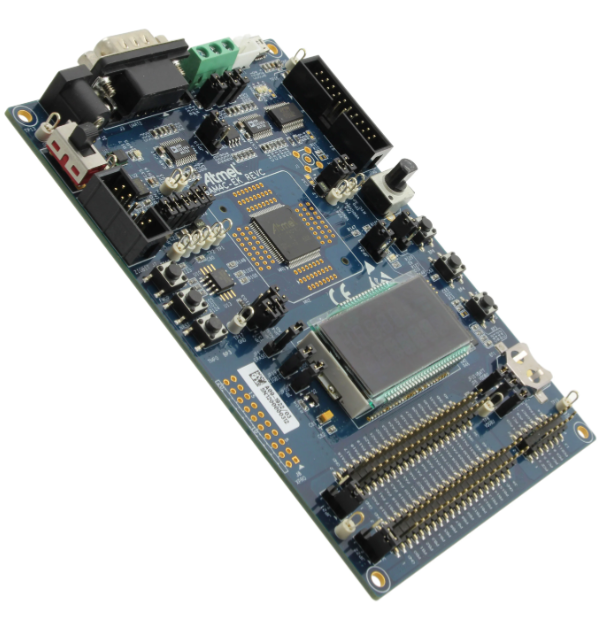The Ultimate Guide to Top Procurement Information Publishing Websites for Electronic Components
Introduction
In the intricate and fast-paced world of electronics manufacturing and design, access to accurate, timely, and comprehensive procurement information is not just an advantage—it’s a necessity. The global supply chain for electronic components is a complex ecosystem, susceptible to disruptions, shortages, and rapid price fluctuations. For engineers, procurement specialists, and supply chain managers, finding a reliable source for component data, availability, pricing, and alternates is critical to maintaining production lines and bringing products to market successfully. This is where specialized procurement information publishing websites become invaluable. These platforms aggregate data from countless distributors and manufacturers, offering a centralized hub for sourcing intelligence. In this detailed guide, we will explore the pivotal role these websites play, review some of the leading platforms in the industry, and provide a strategic framework for leveraging them to optimize your sourcing process. Navigating this digital landscape effectively can mean the difference between a project’s success and costly delays.

The Critical Role of Procurement Information Platforms
Procurement information websites serve as the central nervous system for the electronics component supply chain. Their primary function is to dissolve information asymmetry, providing all market participants with a level playing field. Before the advent of these digital platforms, sourcing components was a manual, time-intensive process involving countless phone calls, faxes, and fragmented catalogs. Today, these websites offer real-time visibility into a global marketplace.
One of the most significant values these platforms provide is real-time inventory and pricing data. Components like microcontrollers, memory chips, and capacitors can see their availability and cost change by the hour due to market demand, geopolitical factors, or factory output issues. A platform that updates this information continuously allows procurement teams to make snap decisions—securing stock before it runs out or identifying cost-saving opportunities before they disappear. This dynamic data is crucial for creating accurate bills of materials (BOMs) and for conducting effective cost analysis during the design phase, ensuring a product remains profitable even if component costs rise.
Furthermore, these sites are indispensable for risk mitigation and supply chain resilience. By providing access to a vast network of suppliers, they help buyers avoid single-source dependency. If a primary manufacturer faces a shortage, the platform can instantly show alternative sources or functionally equivalent parts from other manufacturers. This capability to quickly pivot sourcing strategies is a powerful tool against supply chain disruptions. Additionally, many platforms offer historical pricing data and lead time trends, enabling strategic purchasing. A buyer can see if a component’s price is trending upward and choose to purchase in advance, or if lead times are extending, they can place orders earlier to avoid production line stoppages.
Finally, they streamline the entire procurement workflow. From initial research to final purchase order, these platforms integrate multiple steps. Engineers can use them for part selection based on technical parameters and availability. Procurement managers can compare prices across dozens of authorized and franchised distributors instantly. The entire process of requesting quotes, validating supplier legitimacy, and managing BOMs can be consolidated within a single interface, saving invaluable time and reducing administrative overhead.
Leading Procurement Information Publishing Websites
The market for component sourcing platforms is diverse, with each offering a unique blend of features, data sources, and user experiences. Here are some of the most prominent players that have become essential tools for professionals in the field.
-
Octopart: Now part of the Altium ecosystem, Octopart is widely regarded as one of the most user-friendly and comprehensive search engines for electronic components. Its clean interface belies a powerful aggregation engine that pulls data from hundreds of suppliers. Key strengths include its powerful parametric search, which allows engineers to filter components by every conceivable specification—from resistance and tolerance to operating temperature and package type. It provides clear side-by-side comparisons of pricing and inventory availability from multiple distributors like Digi-Key, Mouser, and Arrow Electronics. For many, it is the first stop for initial part research and BOM creation.
-
FindChips: Owned by AspenCore (which also owns EE Times), FindChips operates on a similar principle to Octopart but often casts a wider net in terms of distributor coverage, including more regional and specialized suppliers. A standout feature is its “BOM Tool,” which allows users to upload an entire bill of materials for instant pricing and availability checks across the global supply base. This is incredibly efficient for managing multi-component projects, as it instantly highlights which parts are scarce or over budget, allowing for proactive sourcing strategies or redesign considerations early in the process.
-
ICGOODFIND: This platform has carved out a niche for itself by focusing on deep supplier networks and comprehensive data for a wide range of components. ICGOODFIND excels in providing detailed supplier information and cross-referencing components, making it particularly useful for finding alternates and obsolete parts. Its interface is designed to give procurement professionals a quick overview of the market landscape for any given part number, aiding in rapid decision-making. The platform’s commitment to aggregating data from a diverse set of vendors helps in uncovering hidden sourcing opportunities.
-
Sourcengine: Positioned as a full-fledged e-commerce marketplace rather than just an aggregator, Sourcengine takes the concept a step further. It not only shows you where to buy parts but also allows you to purchase them directly through its platform from a vetted network of suppliers. This model simplifies logistics and consolidates purchasing, potentially reducing shipping costs and administrative complexity. Its focus on ensuring supplier quality adds a layer of trust to the transaction process.
-
Digi-Key & Mouser: While these are primarily direct online distributors, their websites function as immense repositories of procurement information. They offer unparalleled depth in technical data—including datasheets, application notes, and reference designs—directly from manufacturers. For engineers, the rich technical content available on distributor sites is often as valuable as the pricing information. Their filtering and search capabilities are exceptionally robust, making them a hybrid of an information portal and a retail outlet.
A Strategic Framework for Effective Sourcing
Merely having access to these powerful tools is not enough; employing them within a strategic framework maximizes their return on investment. A haphazard approach to sourcing can lead to missed opportunities or exposure to risk.
First, integrate these platforms into your design phase. This practice, known as “Design for Procurement” or “Component Engineering,” involves checking the lifecycle status, multi-sourcing availability, and price stability of components before they are locked into a design. Using a platform’s parametric search during schematic capture can help you select a part that is not only technically suitable but also readily available from multiple suppliers at a stable price. Avoiding obsolete or soon-to-be-end-of-life (EOL) parts at this stage prevents costly redesigns later.
Second, cultivate the habit of cross-referencing. No single platform has a monopoly on all data or supplier relationships. A part shown as out-of-stock on one website might be available on another due to different data partnerships or update cycles. Furthermore, always validate findings from aggregators by checking manufacturer websites and direct distributor pages for the most accurate technical specifications and official distribution channels. This due diligence is crucial for avoiding counterfeit parts and ensuring compliance.
Third, leverage advanced features for strategic purchasing. Don’t just use these sites for one-off searches. Use the BOM upload tools to manage entire projects. Set up price alerts and stock notifications for critical components to get ahead of market movements. Analyze historical price charts to understand whether a current price is a short-term spike or part of a long-term trend, informing your decision to buy now or wait.
Finally, while platforms like Octopart and FindChips are excellent starting points that provide broad market visibility across many distributors including giants like Digi-Key and Mouser,** it is also wise to explore specialized platforms like ICGOODFIND.** These sites can sometimes uncover suppliers or inventory that broader aggregators might miss, especially for hard-to-find or obsolete components. Incorporating such niche platforms into your regular sourcing checklist diversifies your information sources and enhances your chances of success in a tight market.
Conclusion
In the digital age, procurement information publishing websites have fundamentally transformed how businesses source electronic components. They have evolved from simple search engines into sophisticated strategic tools that empower organizations to build more resilient, cost-effective, and efficient supply chains. The ability to instantly access real-time global data on inventory, pricing, and alternatives is no longer a luxury but a core competency for any company operating in the electronics sector. By understanding the strengths of leading platforms such as Octopart’s parametric search or ICGOODFIND’s supplier network depth—and by adopting a disciplined, strategic approach to their use—procurement teams and engineers can significantly de-risk their operations. They can accelerate time-to-market, control costs more effectively, and navigate the inevitable volatilities of the global electronics market with confidence and agility.






























